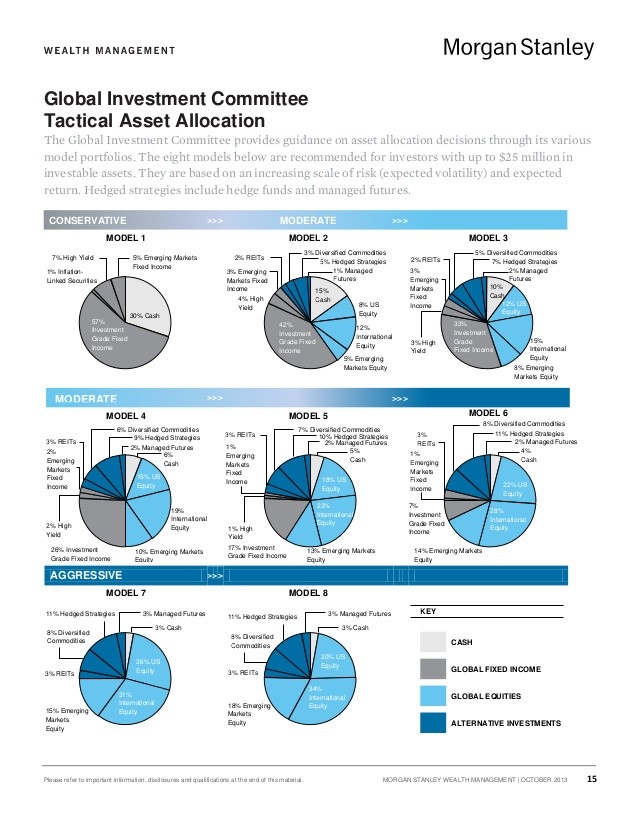Prajna Capital An Investment Guide REITs Vs Real Estate Funds
Post on: 9 Июнь, 2015 No Comment

REITs Vs Real Estate Funds
What are REITs?
REITs — Real Estate Investment Trusts — have been in the news lately ever since SEBI issued guidelines for REITs to come in to existence within the regulatory framework. Investors, both wholesale and retail, now will have another avenue to invest in the real estate sector through a regulated fund route.
REITs will help investors channelise their investments into Indias realty sector through a regulated mechanism. As the investment in REITs is asset-backed, it is helpful for investors to invest in real estate without the hassle of going through the checks on property titles and the plethora of regulatory formalities.
The web definition of REITs says, REITs is an investment trust that owns and manages a pool of commercial properties and mortgages and other real estate assets; shares can be bought and sold in the stock market.
Investopedia defines REITs as a security that sells like a stock on the major exchanges and invests in real estate directly, either through properties or mortgages. REITs typically offer investors high yields, as well as a highly liquid method of investing in real estate.
Types of REITS
There are internationally three types of REITS. In India however, a beginning is made with the third type, the hybrid one.
Equity REITs: Equity REITs invest in and own properties (thus responsible for the equity or value of their real estate assets). Their revenues come principally from their properties rents.
Mortgage REITs: Mortgage REITs deal in investment and ownership of property mortgages. These REITs loan money for mortgages to owners of real estate, or purchase existing mortgages or mortgage-backed securities. Their revenues are generated primarily by the interest that they earn on the mortgage loans.
Hybrid REITs: Hybrid REITs combine the investment strategies of equity REITs and mortgage REITs by investing in both properties and mortgages. REITS in India will be predominantly of the Hybrid type.
Individuals can invest in REITs by purchasing their shares directly on an open exchange. An additional benefit to investing in REITs is the fact that many are accompanied by dividend reinvestment plans (DRIPs). These are equivalent to Growth plans in Equity and other mutual Funds. Besides, REITs invest in shopping malls, office buildings, apartments, warehouses and hotels. There are specific segment or location wise investments too. Some REITs will invest specifically in one area of real estate — shopping malls, for example — or in one specific region, state or country. Investing in REITs is a liquid, dividend-paying means of participating in the real estate market.
I — REITs or REITs in India
On October 10, 2013, SEBI announced the draft consultation paper on Real Estate Investment Trust (REIT) Regulations, 2013. However, earlier in 2008, SEBI had issued certain draft regulations for introducing REITs. I-REITs (REITs in India) would issue securities, which would be listed on stock exchanges and REITs will invest in completed rent generating properties in India (to comprise minimum 90% of net asset value) and mortgage backed securities. Initially I-REITs are planned to be available only to high net worth individuals and institutions to develop the market. Gradually, the doors will be opened to retail investors.
The earlier attempts to introduce REITs in India did not succeed, mainly due to global slowdown and resultant impact on the property markets in India. Also, the proposed REITs then were not permitted to invest in mortgage backed securities, which resulted in to shrinkage of real estate market opportunities.
Structure of I-REITS
Where will REITs invest?
The guidelines from SEBI are clear as regards to where REITS will invest. SEBI has mandated that at least 90% of the value of the REIT assets shall be in completed revenue generating properties. In order to provide flexibility, it has been allowed to invest the remaining 10% in other assets as specified in the proposed regulations, e.g. developmental properties, listed or unlisted debt of companies, mortgage backed securities, equity shares of companies deriving not less than 75% revenue from real estate activities, government securities, money market or cash.
What are the benefits and risks of REITs?
REITs will offer investors another option or avenue to include real estate in their investment portfolio. Further, well managed REITs may offer higher dividend yields which may be higher compared to other investments. As we know, rental yields on long term commercial office space and retail space tend to be much higher than rental yields on residential property, higher than dividend yields on stocks and are often in the range of returns that bank deposits offer. An investor in a REIT can thus look forward to reasonably high annual dividends as well as some appreciation in the long term from appreciation in the capital value of the properties owned by the REIT.
There are several risks in non-traded REITs including illiquidity and non-transparency — which is perhaps why SEBI has not permitted non-traded REITs to be introduced in India.
REITs in the World
In the United States REITs were created when President Dwight D. Eisenhower signed into law the REIT Act title contained in the Cigar Excise Tax Extension of 1960. The objectives of creating REITs were similar that is to give all types of investors the opportunity to invest in large-scale, diversified portfolios of income-producing real estate in the same way they normally invest in other types of assets, through the purchase and sale of liquid securities.

Since then, several (more than 20) countries around the globe have established REIT regimes, with more countries following in to the footsteps. The spread of the REIT approach to real estate investment around the world has also increased awareness and acceptance of investing in global real estate securities which has given more and more options to investors.
A comprehensive index for the REIT and global listed property market is the FTSE EPRA/NAREIT Global Real Estate Index Series, which was created jointly in October 2001 by the index provider FTSE Group, the National Association of Real Estate Investment Trusts (NAREIT) and the European Public Real Estate Association (EPRA).
In Singapore, commonly referred to as S-REITs, there are 26 REITs listed on the Singapore Exchange, with the latest REIT, Soil build Business Space REIT, listed on 16 August 2013. The first one to be set up being Capita Mall Trust in July 2002. They represent a range of property sectors including retail, office, industrial, hospitality and residential. S-REITs hold in addition to local properties, a variety of properties in countries including Japan, China, Indonesia and Hong Kong.
Other Real Estate Investment Funds
It is now a well known fact that in the last decade not only in India, but worldwide, there has been tremendous expansion in real estate, both in terms of residential properties as well as commercial real estate. The trend continues, despite the global slowdown, though with the similar expansion rate. The considerable funds which are entering the real estate market have opened investment opportunities for all and sundry giving further boost to this sector. The result has been that a slew of real estate funds have been promoted by both foreign and Indian financial institutions which are now competing to invest in the higher return real estate segment. Several financial services organisations — including HDFC, Birla Sun Life, Kotak, ICICI Prudential, ASK, Piramal Group, Milestone etc have raised funds from Indian HNIs for their real estate funds. These are not REITs, but are either funds introduced through the PMS route or the Venture Capital route or the PE route. Many of these structures came into existence before the AIF (Alternate Investment Fund) guidelines were implemented by SEBI.
How are REITs different from other real estate funds?
Investors always have the option of buying houses and commercial property directly, without going through the fund route. This continues to be the preferred mode of investing in this sector. However, benefits of diversification are not available. Paperwork is cumbersome and risks associated with title etc are borne by the buyer. Ticker sizes of investments are soaring with ever increasing real estate prices.
Most of the existing set of real estate funds in India focus on capital appreciation as the desired outcome rather than high annual yields as the desired objective. With this in mind, they typically enter into residential or commercial properties at an early stage of development — effectively becoming financiers to builders and get either their returns from an upside on the final sale of the finished properties or a high coupon from the builder or most often, a combination of both. These deals typically are in the nature of a minimum guaranteed return plus some upside, if any, on successful sale of the property. These are typically structured as PE funds are. which means a 6-7 year investment period, with investment amounts being collected in tranches over the first 3 years, and exits being effected in years 4-7. There is little or no liquidity available in the intervening period. Investors cannot normally expect annual dividends, as the objective is to get an upside by partnering with a builder / developer.
One way of looking at the difference between a REIT and a real estate PE / PMS fund is that it is somewhat akin to the difference between a dividend yield equity fund and a closed ended mid and small cap fund. This is not technically a precise comparison, but perhaps useful in getting the context of the difference between the two.
Another important difference is access. Existing funds through the AIF route and PMS route have a minimum investment threshold of Rs. 25 lakhs — which make them clearly HNI oriented products, with limited liquidity. On the other hand, REITs will be available for investments from Rs. 2 lakhs and upwards. Many more investors who cannot otherwise think of capitalising on high commercial space rental yields, can now do so through a professionally managed REIT.
REITs are packaged with the benefits of listing, regular and stable source of income for investors, diversification of assets, small initial investment requirement (initially SEBI has proposed a minimum investment of Rs.2,00,000), professionally managed, no project execution risk (as fully completed properties are to be included in the portfolio -90% of net asset value). However, non payment of rent risk and market price volatility risk remains.
As with all market related investments options, there are always certain risks to be factored into. Some investments have more some less. REITS falls in to the low risk and moderate return type of investment. As REITs get launched and market participants see them delivering results, they could become a very useful asset class for investors wanting stable income with some capital appreciation prospects in the long run. Over time, advisors may start looking at adding REITs as retirement income solutions.














